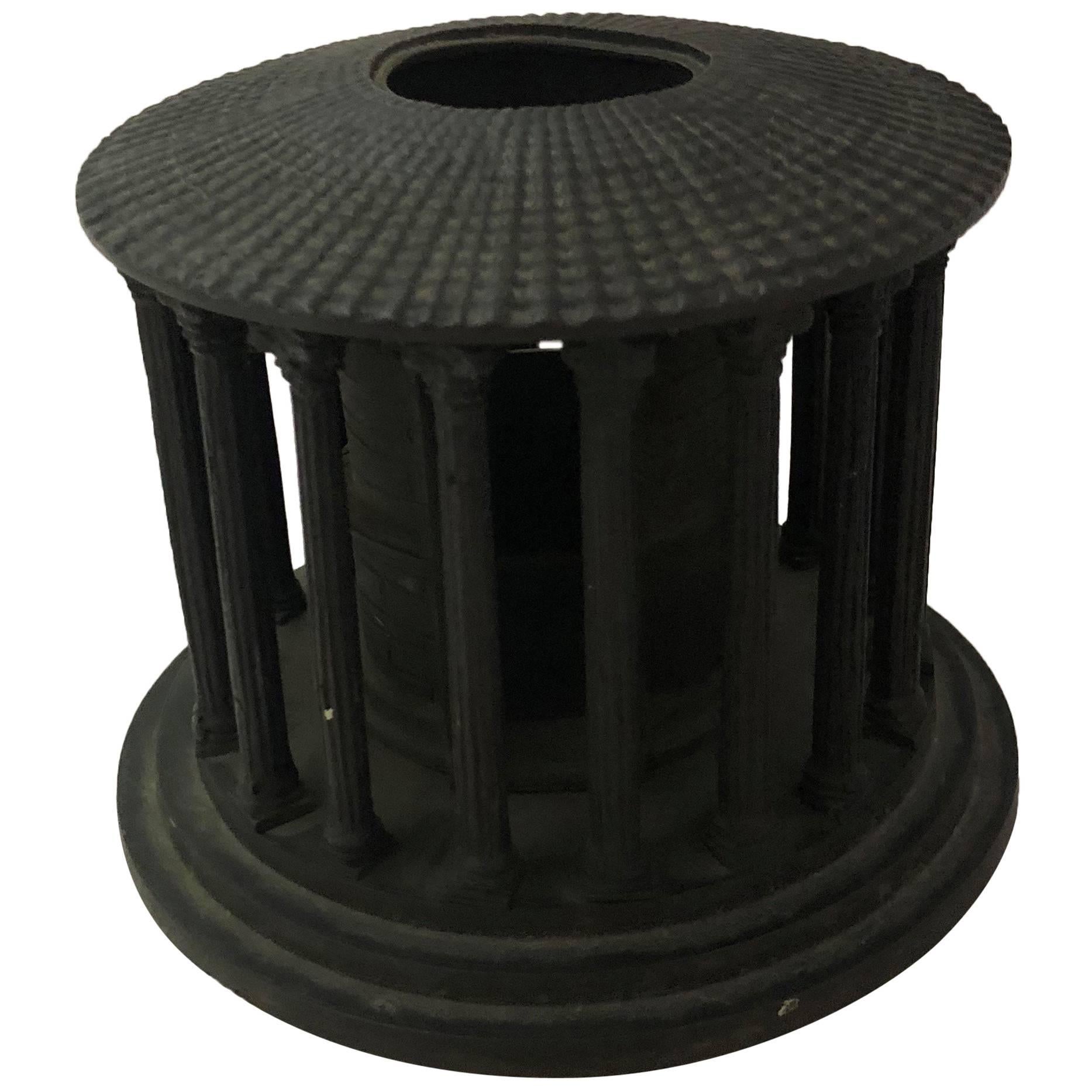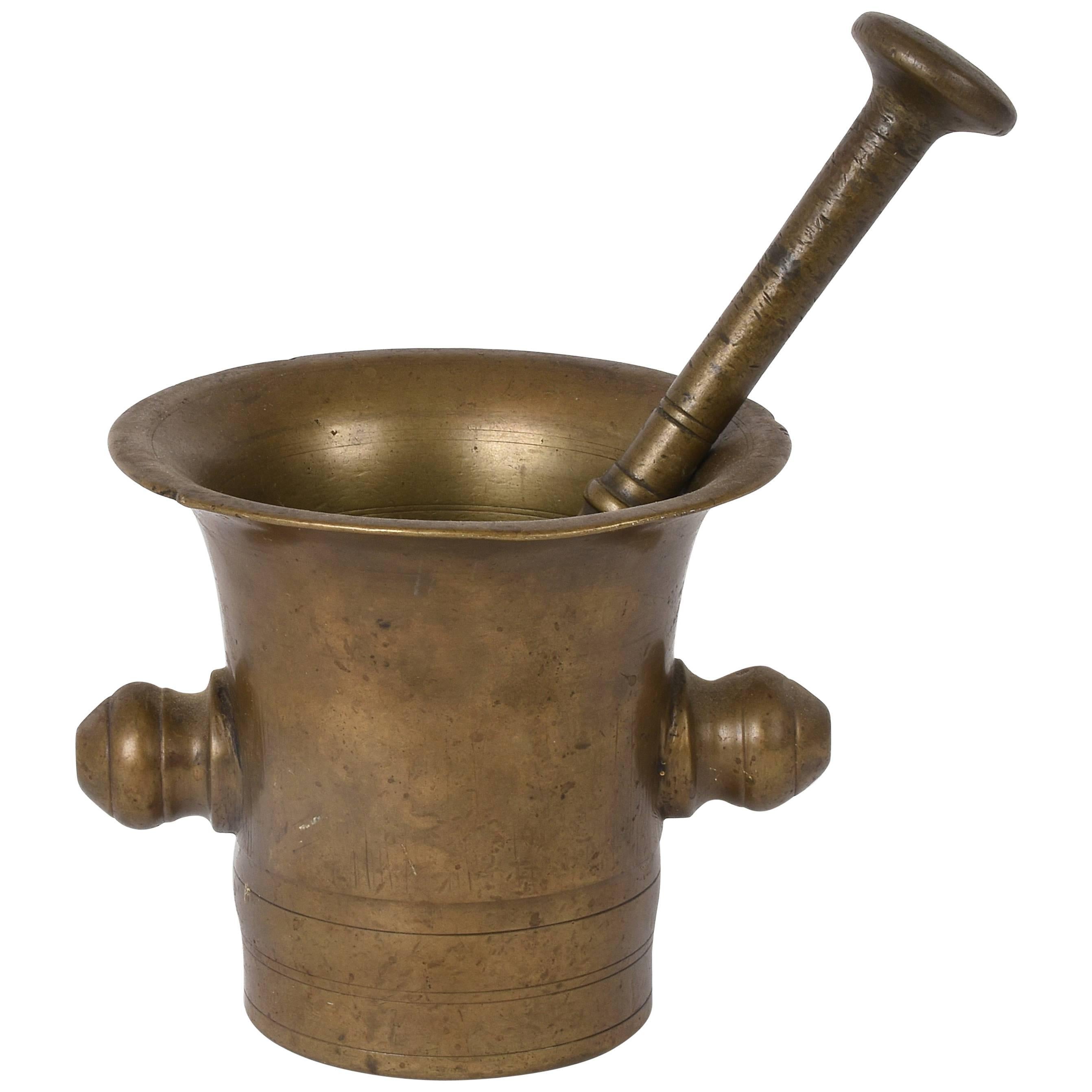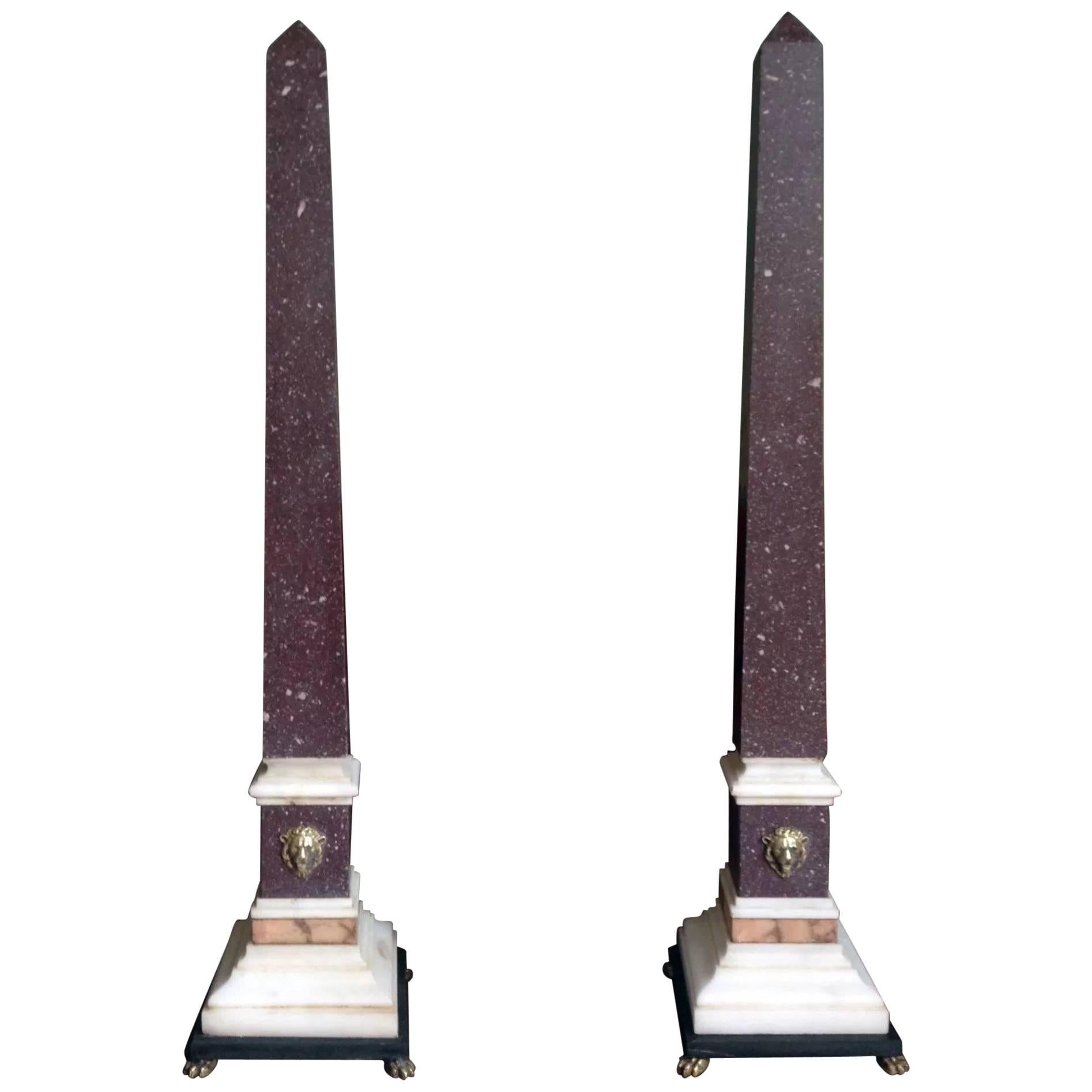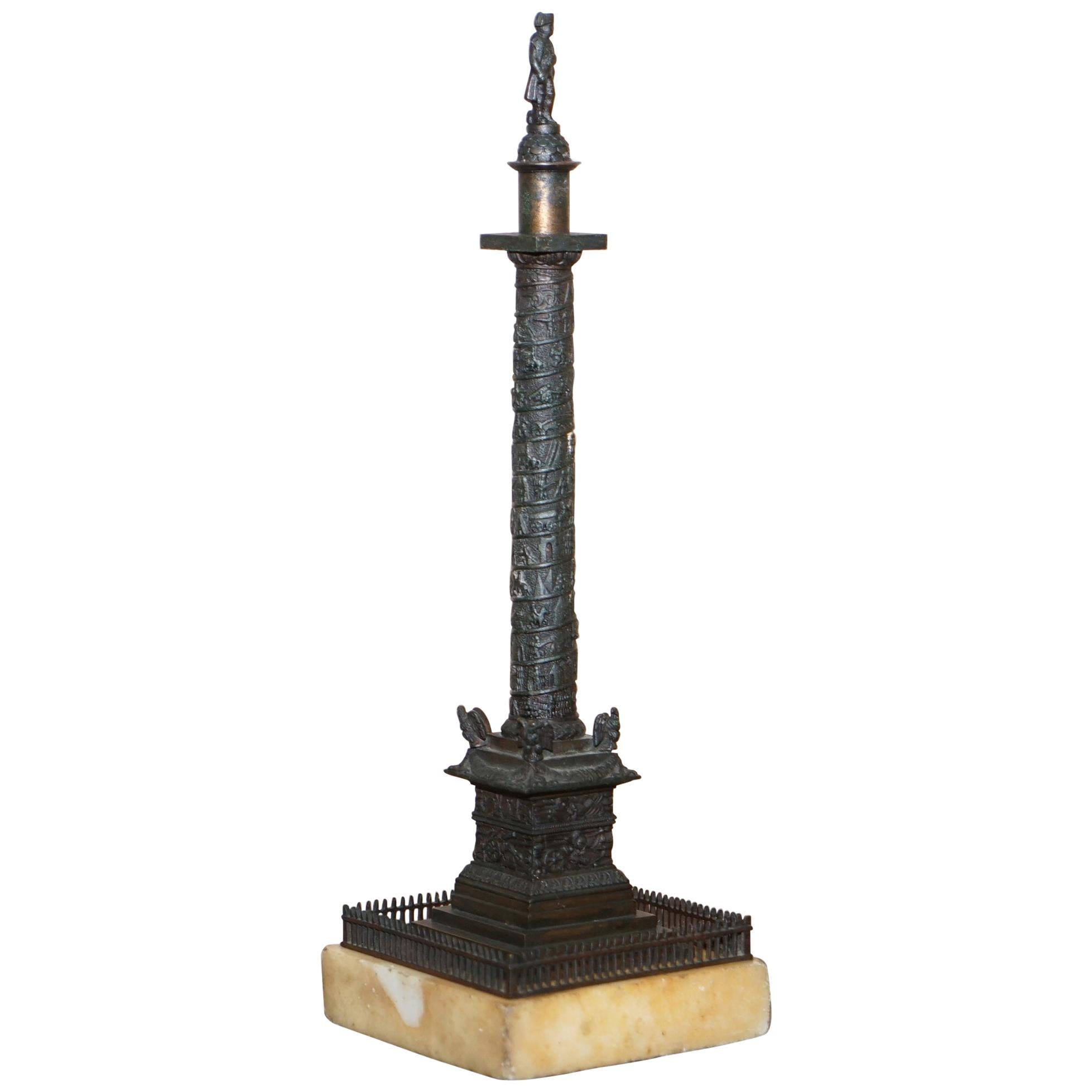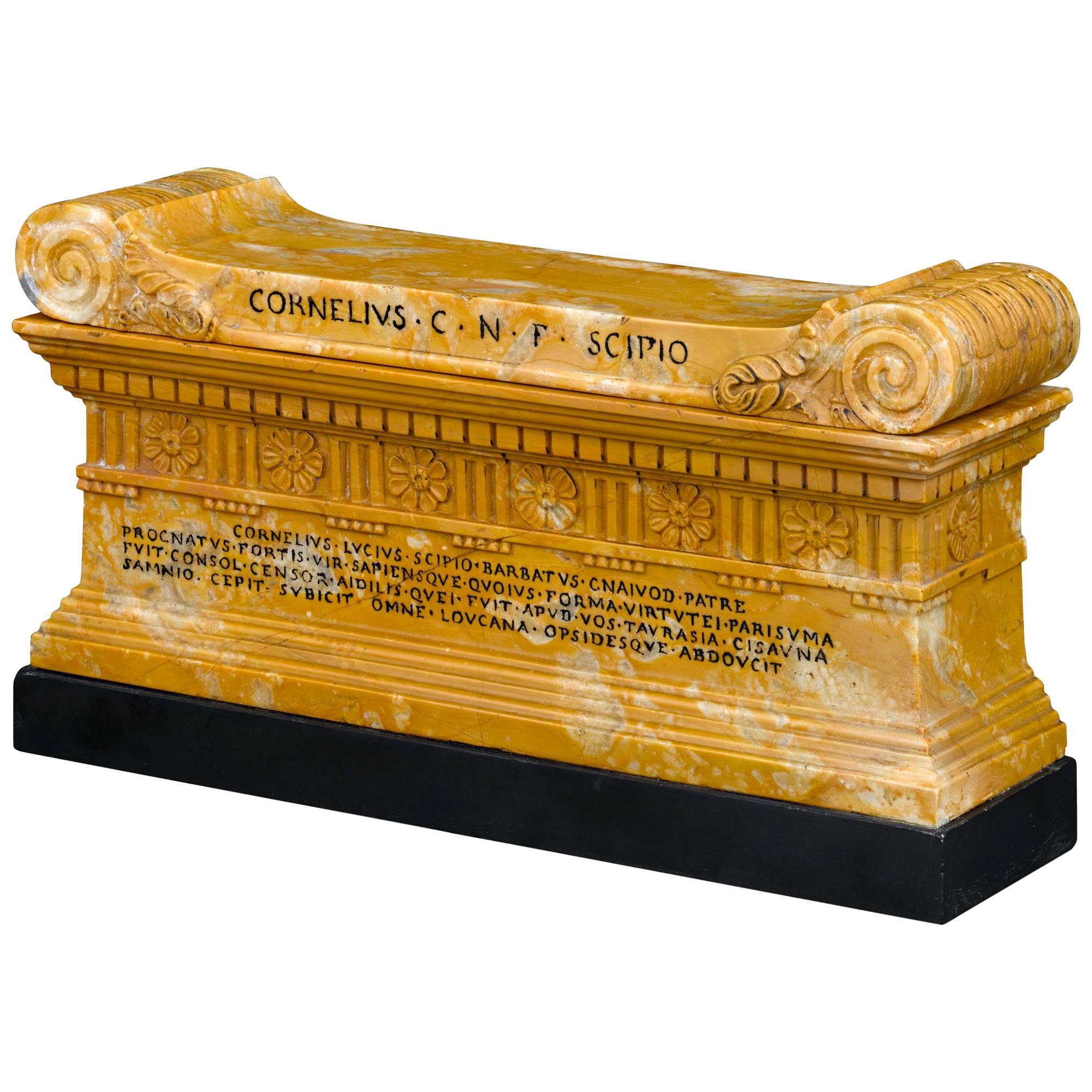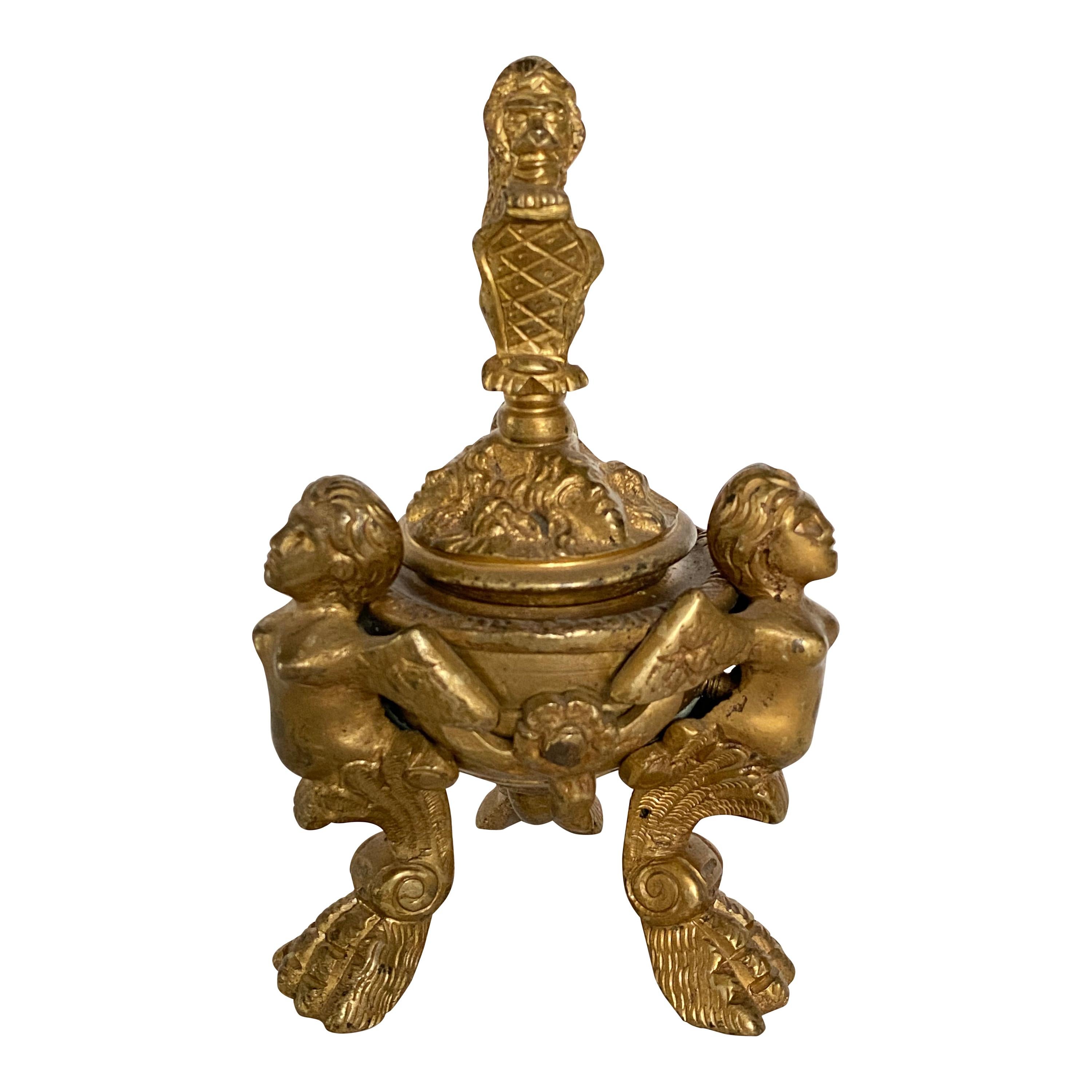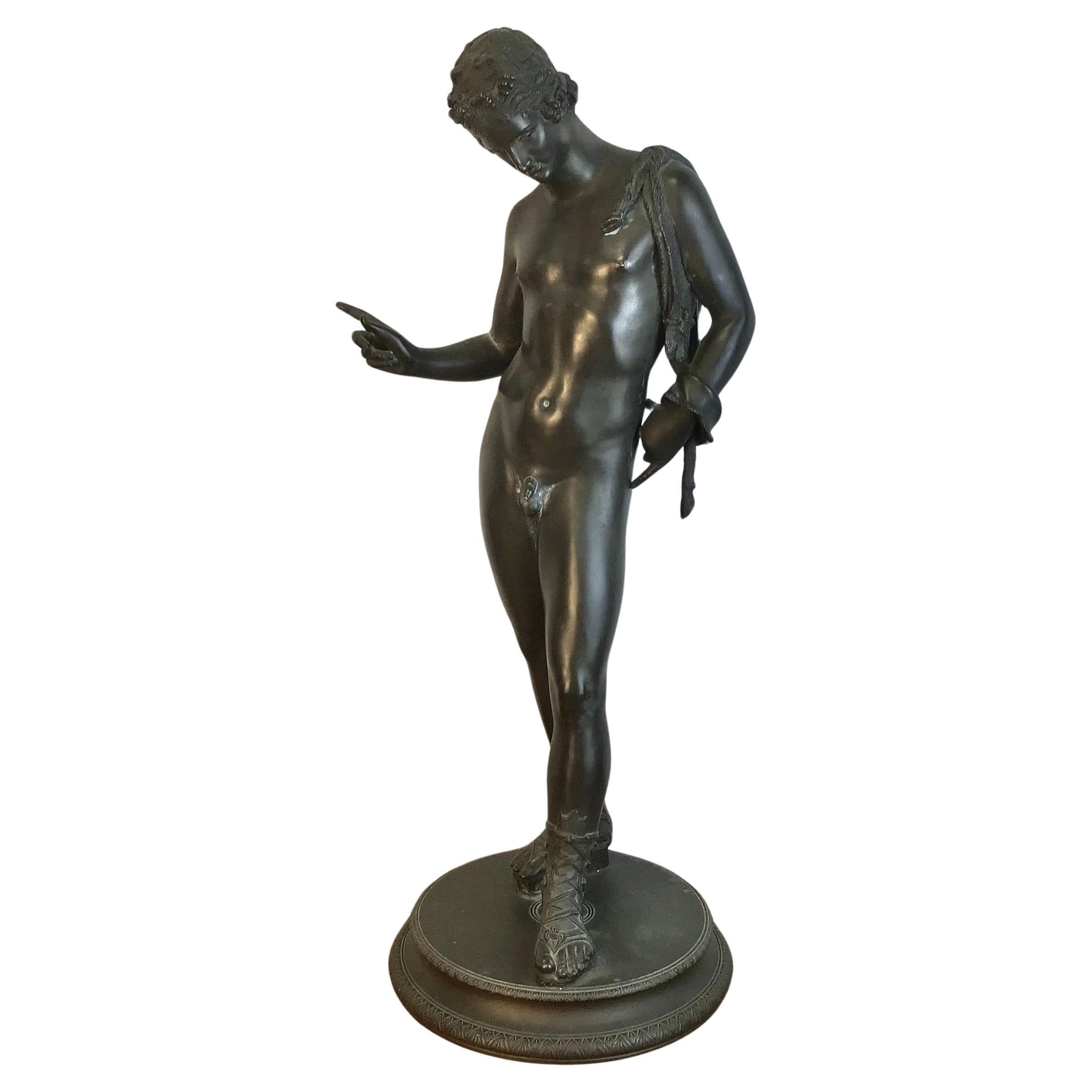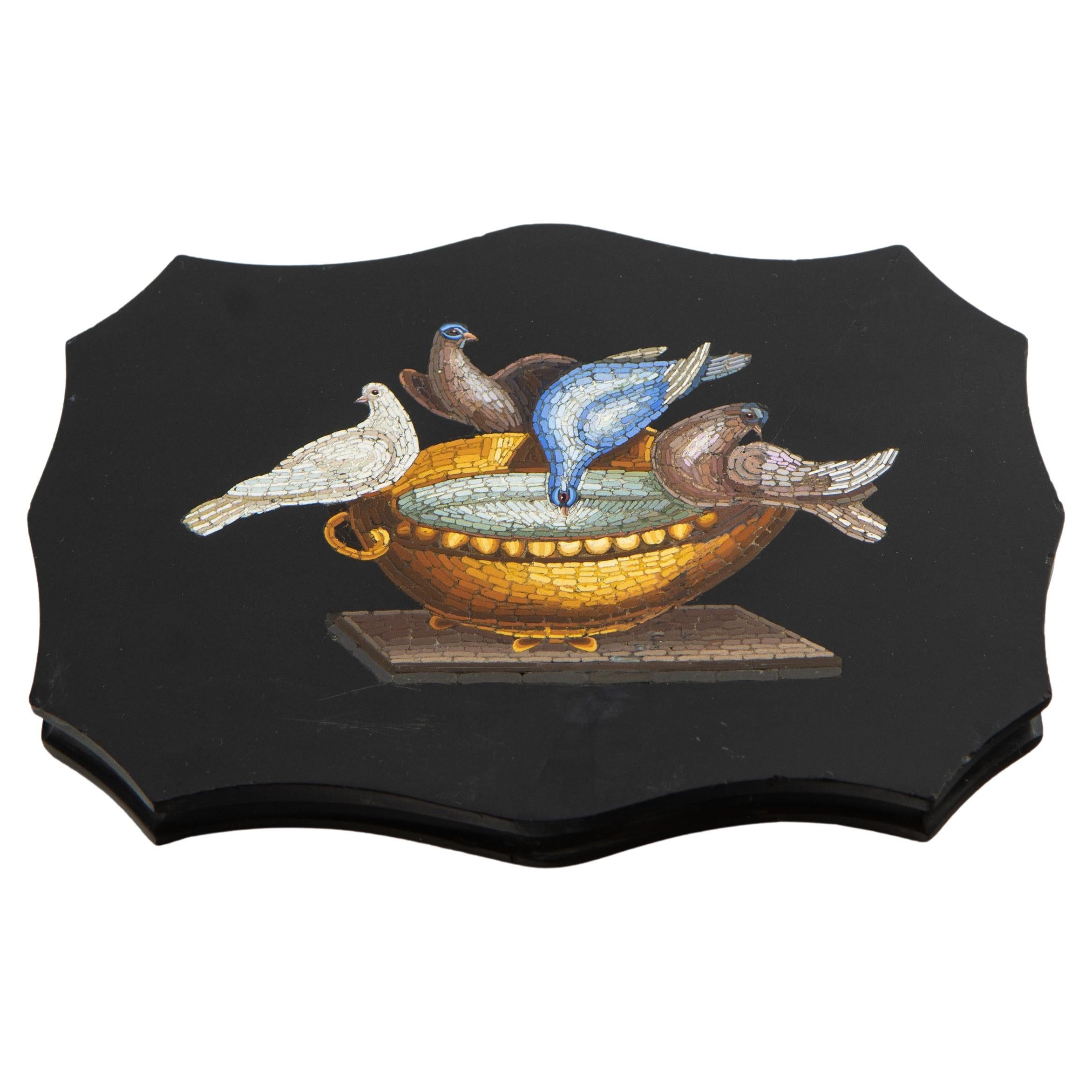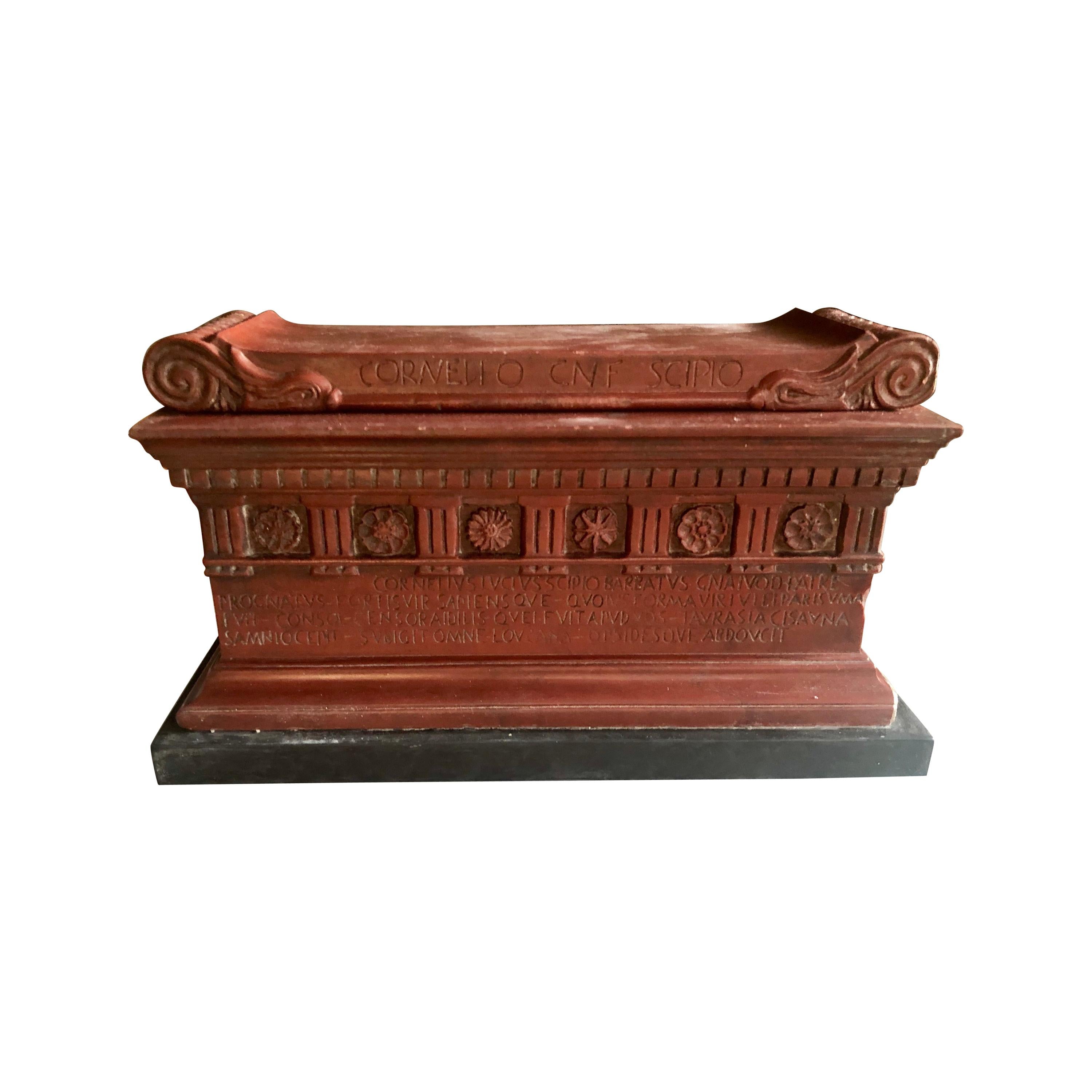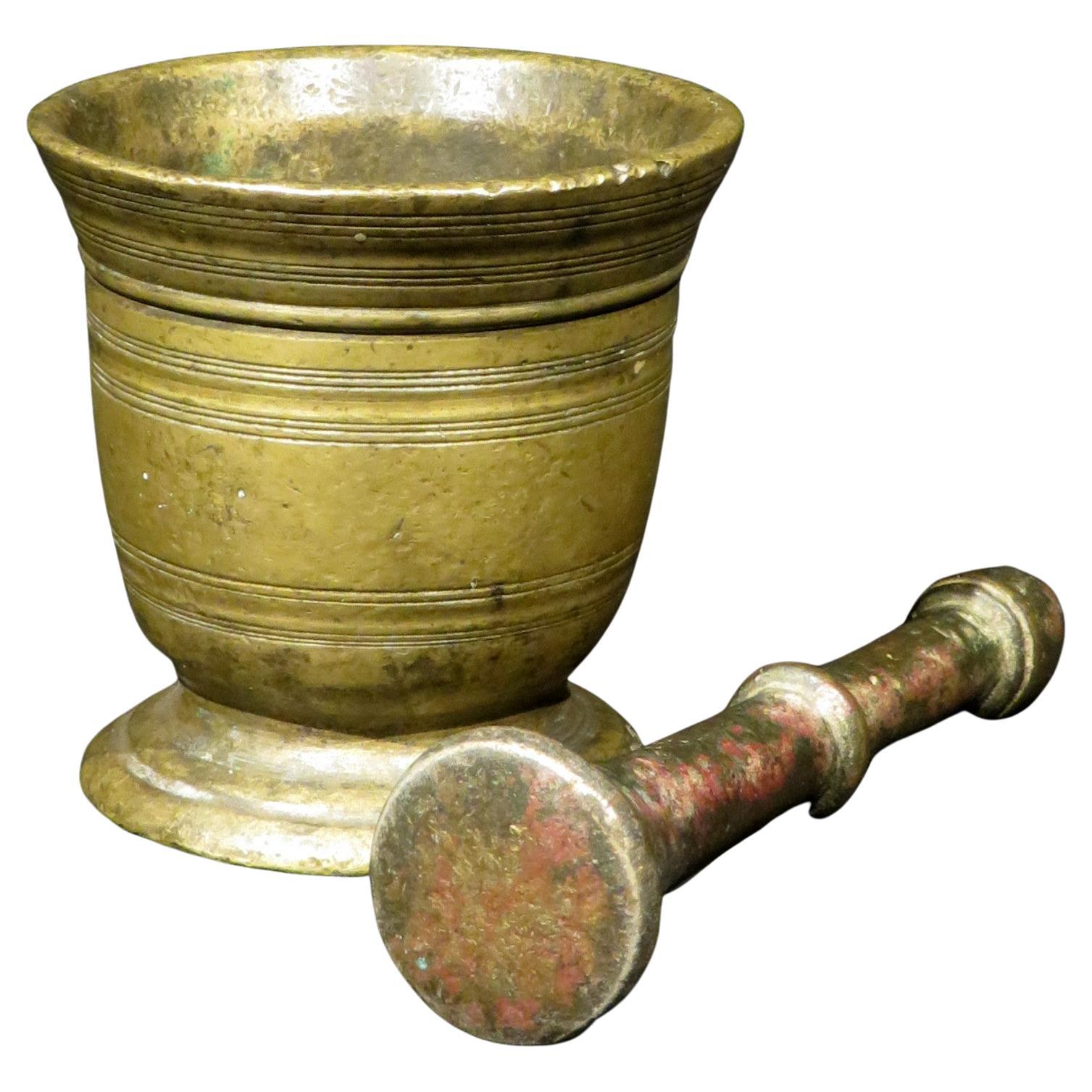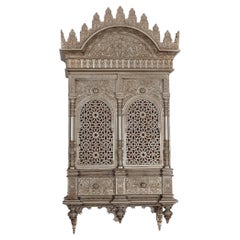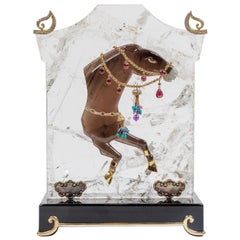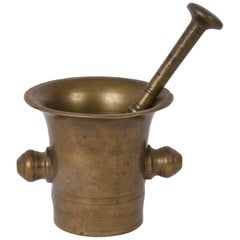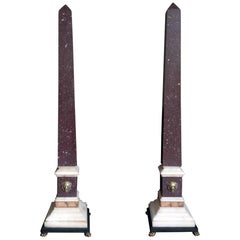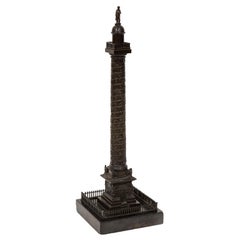
French Grand Tour Bronze Column of the Place Vendome in Paris, 19th Century
View Similar Items
Want more images or videos?
Request additional images or videos from the seller
1 of 19
French Grand Tour Bronze Column of the Place Vendome in Paris, 19th Century
About the Item
- Dimensions:Height: 18 in (45.72 cm)Width: 5.5 in (13.97 cm)Depth: 5.5 in (13.97 cm)
- Style:Grand Tour (Of the Period)
- Materials and Techniques:
- Place of Origin:
- Period:
- Date of Manufacture:circa 1860
- Condition:Wear consistent with age and use.
- Seller Location:New York, NY
- Reference Number:1stDibs: LU1798218019771
About the Seller
5.0
Vetted Seller
These experienced sellers undergo a comprehensive evaluation by our team of in-house experts.
Established in 1980
1stDibs seller since 2016
58 sales on 1stDibs
More From This SellerView All
- Rare American Gold Intaglio Seal of George Washington, Early 19th CenturyLocated in New York, NYA rare American gold mounted intaglio seal of a bust-length portrait of the first President in uniform enclosed by the inscription "George Washington", early 19th century. In a fitted green leather box retailed by: D.S. Lavender Antiques Ltd., Bond Street, London, England; Provenance: D.S. Lavender Antiques Ltd., Bond Street, London, England Anita and Irvin Schorsch Collection Exhibited: Museum of Mourning Art...Category
Antique 19th Century American American Classical Historical Memorabilia
MaterialsGold
- Islamic "Alhambra" Silvered Bronze Quran Cabinet in the Islamic Nasrid StyleBy Rafael ContrerasLocated in New York, NYAn Islamic "Alhambra" silvered bronze Quran cabinet in the Islamic Nasrid style, Attributed to Rafael Contreras, circa 1880. Of rectangular form with crest and pendant finials to base, with two hinged doors above a drawer, the lock hidden by a hinged plate, profusely cast with vegetal and geometric designs, the doors in openwork, the reverse stamped with maker's mark, 'GESETZLICH GESCHUTZT...Category
Antique 19th Century German Islamic Religious Items
MaterialsBronze
$18,750 Sale Price25% Off - Mellerio Paris, A French Gold, Diamonds, Silver, and Smoky Quartz Carved HorseBy MellerioLocated in New York, NYMellerio Paris, A French Gold, Diamonds, Silver-Gilt, Rock-Crystal, Jade, Mother-Of-Pearl and Smoky Quartz, Carved Horse Sculpture, Jeweled Mounted Object. An extremely rare and unique, one of a kind French gold, diamonds, Silver-gilt, rock-crystal, jade, obsidian, mother-of-pearl, and smoky quartz carved jeweled sculpture "CHEVAUX DE LEGENDE", "A Legendary Horse" by Mellerio, Paris, circa 1991. Sitting on black obsidian base, the solid rock-crystal slab is finely applied with a carved smoky -quartz and jade horse with a harness mounted in 18k gold, brilliant -cut diamonds, rubies, turquoise, and amethyst chains and pendants. The top columns adorned with 18k gold and brilliant cut diamond pendants, the bottom with gold and mother of pearl plaques. The obsidian base with a plaque engraved: CHEVAUX DE LEGENDE" / N° 05 / MELLERIO DITS MELLER / PARIS / 5003 D The piece is in excellent condition and comes with a custom made wood case made for transport. It's very elegant and has French hallmarks throughout. A truly magnificent piece. Measures 10.5" high x 8.5" wide x 4" deep Founded in France in 1613 by the descendants of Italian immigrants from the Vigezzo Valley in the north of Italy, Mellerio is one of the oldest jewellery houses in Europe. The family business soon attracted the attention of the Royal Court and Marie Antoinette herself reportedly purchased a precious bracelet featuring 7 cameos surrounded by rubies in 1780. Later on, in the 19th century, Mellerio became the official supplier of the French Royal family and the Court of Netherland. Mellerio creates many jewellery items, all set with rare gems such as peridots, amethysts, aquamarines, citrines and topaz, applying for a patent, the flexible stem, a very supple and light jewellery mechanism. Mellerio remains also well known for their spectacular series of Art Nouveau jewels, created at the beginning of the 20th century, as well as for the creation of trophies rewarding some of the greatest footfall and tennis players of history. In 1993, the jewellery house launched their first watch collection. Today, Mellerio has stores in Paris, Japan and Hong Kong. July 14, 1789: this date is known throughout the world as the beginning of the French Revolution. According to a ledger belonging to House of Mellerio, this was also the day that the jeweler sold a golden key to the Comte de Coutance for 10 livres. This ledger, as well as inventories dating as far back as 1768, are the jeweler’s oldest archives. These archives have continued to grow over the years, as the House, established on rue de la Paix in Paris, still lives on today, still in the hands of the same family from Craveggia, in the North of Italy. The tumultuous history of the Mellerio family in France probably goes as far back as the Italian wars of the Renaissance, but the first official document proving their commercial activity in Paris dates back to 1613. This document is the famous royal warrant awarded by Marie de Medici to a number of Italian families established along the rue des Lombards, including the Mellerios, allowing them to sell “small jewelery items”, therefore granting them a small exception to the traditional monopoly enjoyed by Parisian jewelers. At that time, powerful corporations regulated the operations and customs of Parisian business, but thanks to this exceptional warrant, the Mellerios managed to escape the confines of this framework. Today, this wax-sealed document is kept at the city hall of Craveggia. From 1613 to the Revolution, the Mellerios lived between France and Italy. The corporations tried many times to put an end to their trade privileges, but all in vain, as a dynasty of sovereigns renewed the warrant. Always marrying and often retiring in Craveggia, the Mellerios continued to maintain their jewelry business in Paris. At first, they did this without a shop. Wearing backpacks (wooden boxes divided into small compartments where jewels were kept), they would tour town fairs around Paris and royal castles. This is how Jean-Baptiste Mellerio (1765-1850) is said to have sold a bracelet set with rubies and Antique cameos to Marie-Antoinette, which still exists today. Many elements seem to prove the veracity of this anecdote. The queen was particularly fond of cameos, which cover the entire background of her famous jewelry cabinet, and ruby was her favorite stone after diamond. The famous bracelet, reacquired a few years ago by the House of Mellerio, is indeed an 18th century jewel, set with antique cameos representing the profiles of Roman emperors. Two branches of the family were operating in Paris during this time, under the reign of Louis XVI: that of Jean-François (1746-1828), the paternal ancestor of the current Mellerios, and that of Jean-Baptiste (1765-1850). The French Revolution forced them to return to Italy. However, both Jean-Baptiste and François Mellerio (1772-1843), who was the son of Jean-François, were eventually able to return to Paris after the founding of the Consulate. Jean-Baptiste opened a shop at the Iron Crown of rue Vivienne, and François opened his at the Palais des Tuileries, rue du Coq Saint-Honoré. His well-organized order books give an idea of his high-ranking clientele during the “Old Regime”, among which were the Comte and Comtesse Octave de Segur, the Marquise (later Duchess) de Tourzel, former governess of the royal children, and her daughter, the Comtesse de Bearn, the Craufurds -who organized the flight to Varennes, the Duc and Duchess de Gramont, the Comtesse de Boigne, and Madame de Souza, Talleyrand’s mistress. We also see the names of the imperial family: Empress Josephine, the Queen of Holland, Princess Elisa, Caroline and Pauline. At that time, the House of Mellerio specialized, among other things, in the trade of antique cameos, a newly fashionable genre of jewel that captured the imagination of all the princesses and noble women of the time. The years of the Restauration and July Monarchy were among the most glorious. The Bourbons were back on the throne, and the clientele of the House of Mellerio had regained its former wealth. Mellerio supplied Louis-Philippe, Duke of Orléans, as well as his mother, wife and sister, with sumptuous jewels, including a set of emeralds made piece by piece, while the Duke of Bourbon, last prince of the House of Condé, offered diamonds to his mistress, the scheming Baronne de Feucheres, and Monsieur de LaFayette also bought cameos for one of his granddaughters. For the first time, Mellerio ventured into the world of arts in 1815, when Carlotta Grisi, a famous dancer who created Giselle, as well as an actress named Rachel, bought jewels at the Mellerio store on rue de la Paix. 1848 marked a new turning point. France once again became a Republic. François Mellerio handed the company over to his son, Jean, and the latter decided to travel to Spain to build a new clientele. He later became one of the jewelers of the royal family, and met Eugénie de Montijo, who remained a faithful client when she became empress of the French people. The Imperial years were lavish. During the Second Empire, Paris was a pageant of crinoline dresses designed by Worth, while jewels by Mellerio, Worth’s neighbour on the rue de la Paix, adorned the noble women of the Tuileries court. The Empress bought pearls. Mathilde Bonaparte...Category
20th Century French Mounted Objects
MaterialsJade, Quartz, Rock Crystal, Gold, Silver
- Claude Lalanne, a Rare Gilt-Bronze Dragonfly Frame, France, C. 1985By Claude LalanneLocated in New York, NYClaude Lalanne (1925-2019) a rare gilt-bronze dragonfly frame, France C. 1985, Signed on reverse Cl. Lalanne Artcurial 25/450. Measures: 4" high x 3...Category
20th Century French Art Nouveau Picture Frames
MaterialsBronze
Price Upon Request - Paul Thubert 'English, 19th Century' a Large Bronze Sculpture of War VeteransLocated in New York, NYPaul Thubert (English, 19th Century) A large patinated bronze sculpture statue of two war veterans with uniforms and badges. Each with amputation injuries. One with an amputate...Category
Antique 19th Century British British Colonial Figurative Sculptures
MaterialsBronze
- Rare Patinated Bronze Sculpture of Benjamin Franklin, by A. Carrier-BelleuseBy Albert-Ernest Carrier-BelleuseLocated in New York, NYAlbert-Ernest Carrier-Belleuse (France, 1824-1887) A rare seated bronze statue of Benjamin Franklin holding his walking stick and hat, with a book in his ri...Category
Antique 19th Century French American Classical Figurative Sculptures
MaterialsBronze
You May Also Like
- Grand Tour Patinated Bronze Model of the Temple of Vesta, Italian, 19th CenturyLocated in Spencertown, NYThe model, made as an inkwell and lacking it's cover.Category
Antique 19th Century Italian Grand Tour Architectural Models
MaterialsBronze
- 19th Century Grand Tour Antique Handmade Bronze Mortar with PestleLocated in Roma, IT19th-century grand tour antique handmade bronze mortar with pestle. This fantastic piece has an original patina. The pestle is 9.05 inc high wit...Category
Antique Mid-19th Century European Grand Tour Scientific Instruments
MaterialsBronze
- Pair of Grand Tour Egyptian Porphyry Obelisks, 19th CenturyLocated in Spencertown, NYThe pair of obelisks with gilt lion faces on front base and gilt lion paws at corners, signed indistinctly. Rome dated 1893.Category
Antique 1890s Italian Grand Tour Architectural Models
MaterialsPorphyry, Bronze
- 1860 Grand Tour Bronze Statue of Place Vendome Column with Napoleon, Marble BaseLocated in GBWe are delighted to offer for auction this stunning antique circa 1860 Grand Tour bronze statue of Place Vendome Column with Napoleon on top in so...Category
Antique 1860s Italian Grand Tour Mounted Objects
MaterialsBronze
- 19th Century Tomb of the Scipios Grand Tour SouvenirLocated in New Orleans, LAThis incredible Grand Tour inkwell relic takes the form of the ancient Tomb of the Scipios, a family of Roman war heroes and generals. Beautifully carved ent...Category
Antique 19th Century Italian Grand Tour Inkwells
MaterialsSiena Marble
- 19th Century Italian Grand Tour Bronze InkwellBy Severo Calzetta da RavennaLocated in Kensington, MDAfter a 16th century Venetian design, winged putti with taloned legs support a turned bronze inkwell covered with a lid decorated with masks and garlands, surmounted by a lion holdin...Category
Antique 19th Century Italian Renaissance Revival Inkwells
MaterialsBronze
Recently Viewed
View AllMore Ways To Browse
Grand Tour Reliefs
Miniature Columns
Miniature Garden
Place De Vendome
Model Cannons
Model Cannon
Gold Screens 18 Century
Tour De France Plates
Miniature Cannon
Vendome Marble
Vendome Column
Vendome Napoleon
Miniature Bronze Cannon
Place Vendome Column
Battle Napoleon Marble
Mushroom Model
Salesman Samples
Salesmans Sample
